Food Distribution: The Core of the Safety Net
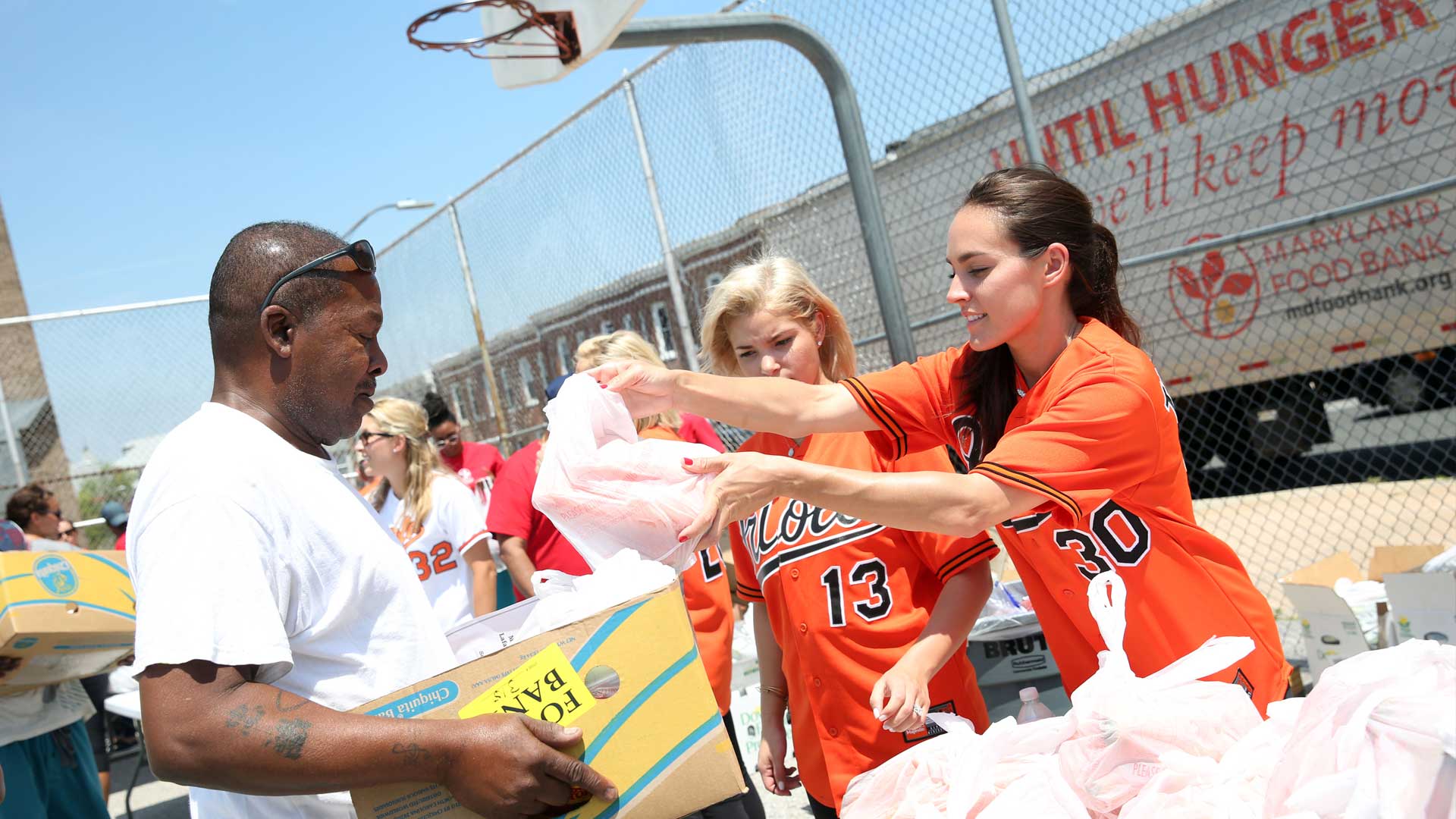
Food distribution is integral to fulfilling the Maryland Food Bank’s mission of feeding hungry people. Simply put, without it, there is no safety net for food-insecure Marylanders to rely on.
In 1979, the Maryland Food Bank (MFB) was established as the first food bank on the east coast. In our first year of operation, we distributed 400,000 pounds of food. As we mark our 40th year of helping hungry Marylanders, we’re providing that same amount of food in less than a week.
In a state known for its wealth, many people are surprised to learn that Maryland’s communities are deeply impacted by food insecurity. In fact, one in nine residents — more than 665,000 children, seniors, and hardworking families — are unsure where their next meal will come from, that’s enough people to fill up M&T Bank Stadium for every Ravens’ home game of the season.
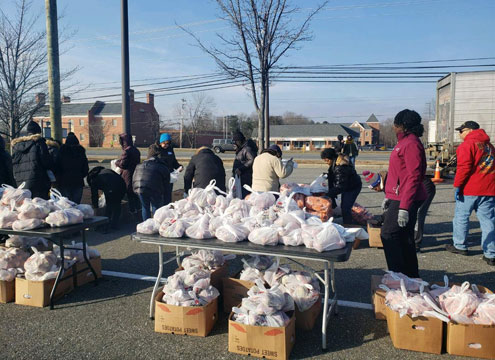
Distributing enough food to help this many people requires a significant amount of time and money. As part of our new strategic plan, what we’re calling MFB 2.0, we are working to not only source and distribute more food, but to ensure that the quality of that food increases as well.
Ramping up the amount of produce and proteins in our food distribution mix may cost more, but we know it is the right thing to do – healthier, stronger communities mean a healthier, stronger Maryland.
Where Do We Get Our Food?
As you can imagine, we can’t do this alone. Our valued corporate donors, whose generosity allows us to provide nutritious, affordable food through various distributions points, are the cornerstones of our food distribution efforts. Food sources include:
- Food retailers
- Wholesalers
- Manufacturers
- Distributors
- Corporations
- Local farms
- The state and federal government
- Individual donations
“Food sourcing is more challenging today than in the past for a variety of reasons; namely, supply chain improvements and industry changes have reduced donations from traditional sources,” said Butch Langenfelder, MFB’s food sourcing manager.
Reducing Food Waste Increases Food Distribution
The National Resources Defense Council estimates that 40 percent of food in the U.S. goes uneaten, and we are working on a number of fronts to drive that number down in Maryland.
A large portion of our inventory is salvaged food. This food is perfectly edible and meets FDA regulations, but isn’t marketable for a variety of reasons — often due to overproduction, inventory control, or approaching sell-by dates.

“We’ve established relationships with a number of local retailers that drop off millions of pounds of salvaged food at our Baltimore warehouse each year that would otherwise go to waste,” Langenfelder said.
As generous as these supporters are, we’re still missing some opportunities and developed the Retail Rescue Program. MFB drivers pick up larger donations from local retailers, while our network partners rescue smaller quantities of food from stores in their local communities.
To supplement salvaged, donated, and rescued foods, we also maximize money from grants, donations, and Virtual Food Drives to purchase staple goods. Since the availability of salvaged and donated food items can be unpredictable, these purchased foods help us provide varied, balanced meals. We’ve established partnerships with key vendors across the region to ensure a steady year-round stream of produce, which can be a challenge to procure in the winter months when Maryland farms are preparing for the next growing season.
From Farm to Food Bank
Our Farm To Food Bank Program has strengthened partnerships with more than 50 farms and successfully reduced produce spoilage significantly. This reduction in waste and other programmatic improvements mean we can better meet the need in Maryland communities.

“While people tend to only think about farming in warmer weather, it’s a year-round effort for us. Whether it’s visiting with potential new farm partners in the winter, or making improvements to the way we glean, transport, and store fresh produce throughout the year, we are always looking for ways to grow this program,” said Amy Cawley, Farm to Food Bank coordinator.
Food Distribution Begins with Volunteers
In general, it takes between three and five days to move food from our docks into Maryland communities.
“A streamlined food distribution process allows us to quickly process and deliver fresh food to our network partners, and into the hands of someone who might not be able to eat that day without it,” noted Rick Condon, vice president of operations.
This wouldn’t be possible without the efforts of nearly 7,500 volunteers who regularly sort donations, which allows us to identify what additional food items need to be purchased. At the Baltimore warehouse, volunteers on the conveyor belt organize non-perishable donations into different categories, including both food and non-food items.

The success of this set-up led to its replication in our Salisbury location, where in the summer of 2018 a similar belt was installed. Volunteers pull the appropriate items off the belt by category and then pack them into boxes, which are stacked on a pallet.
“New volunteers are always amazed when they see the true size and scope of our food distribution efforts, especially the amount of work required to sort and pack enough food to help hundreds of thousands of hungry Marylanders,” remarked Hillary Wall, salvage coordinator.
The Next Link in the Food Distribution Chain
After food is packed, it is instantly scanned into inventory. Our network partners have 24/7 access to our inventory of purchased and donated foods and can submit orders through our online system.
Orders are finalized by 11 a.m. each day and sent to the warehouse to be assembled for either pickup or delivery to these partners. MFB employees navigate through the warehouse on forklifts to locate food and complete orders, and an efficient bar code and numbering system enables our pickers to quickly identify food. More than 16,000 orders are processed each year!
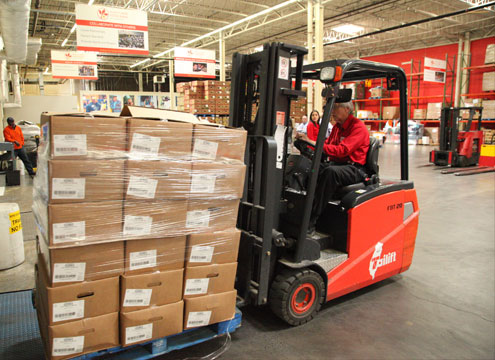
Finally, orders are moved to a staging area. There are many partners who pick up their orders, while some larger orders are delivered all over the state via our fleet of trucks. Our drivers make sure MFB partners get the food their communities need, when they need it.
“In the hustle and bustle of working, it’s easy to forget that this is more than just a delivery job,” said Steven Amburgey, one of MFB’s drivers. “I’m helping to get food to the places where fellow Marylanders turn for help, and that motivates me to get up and come to work every day.”
Partners Complete the Food Distribution Process
MFB is tremendously fortunate to have developed solid relationships with community organizations that blanket the state from Cumberland to Cambridge, providing more than 1,150 distribution points that get food directly into the hands of hungry Marylanders quickly and efficiently. All our partners meet and maintain certain eligibility requirements, uphold high standards of food safety, and report regularly to ensure we are meeting the need of food-insecure Marylanders everywhere.
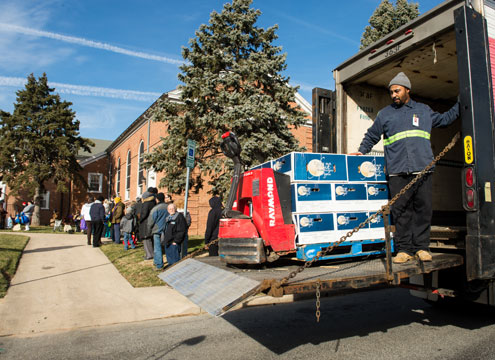
Nonprofit organizations interested in joining our network must operate a food assistance program that is open to the community and free of charge or exchange of service. This includes:
- Homeless shelters for men, women, and families
- Emergency food pantries
- School backpack programs
- Hot meal programs/soup kitchens
Specialized Programs that Maximize Resources
To better allow us to channel fresh and non-perishable foods to our partners, we’re constantly improving and refining our menu of innovative food assistance programs, which currently includes:
- Pantry on the Go – brings fresh produce and staple foods directly into communities where other forms of hunger relief are scarce
- FoodWorks – provides pathways out of hunger by training students for culinary careers while transforming donated food into nutritious meals
- Summer Clubs – provides kids with nutritious meals during the summer
- Supper Clubs – provides kids with nutritious meals during in after-school programs
- School Pantry – provides children and families access to nutritious foods directly from their schools
- HEART Markets – combines the distribution of fresh produce and staple groceries with music, nutrition education, and meal prep demonstrations to inspire healthy choices
- SNAP Outreach – helps people apply for short-term monthly relief
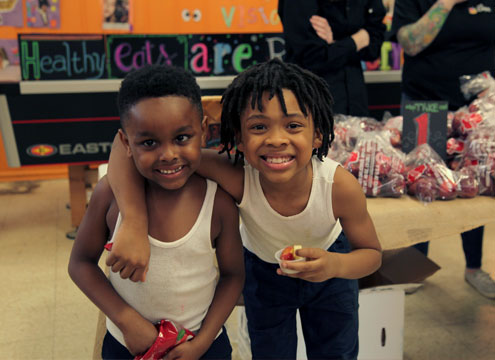
Help Us Strengthen Our Food Distribution Efforts
At the Maryland Food Bank, we employ a multifaceted approach to helping food-insecure Marylanders access food so they can thrive.
“Working with the Maryland Food Bank these past 12 years has been incredibly rewarding,” says Langenfelder. “We’ve evolved so much in our scope and reach in fighting hunger. But we still need help, and whether you donate your time, energy, food, or money to MFB, your efforts are tremendously appreciated.”
When we say “We are Maryland’s Food Bank,” we truly mean we. We value and thank you for your support in helping to directly impact the lives of your hungry neighbors.
Get updates on our progress in the fight against hunger
Want to see how your involvement directly impacts the well-being of your neighbors in need? Get the latest news sent to your inbox.







